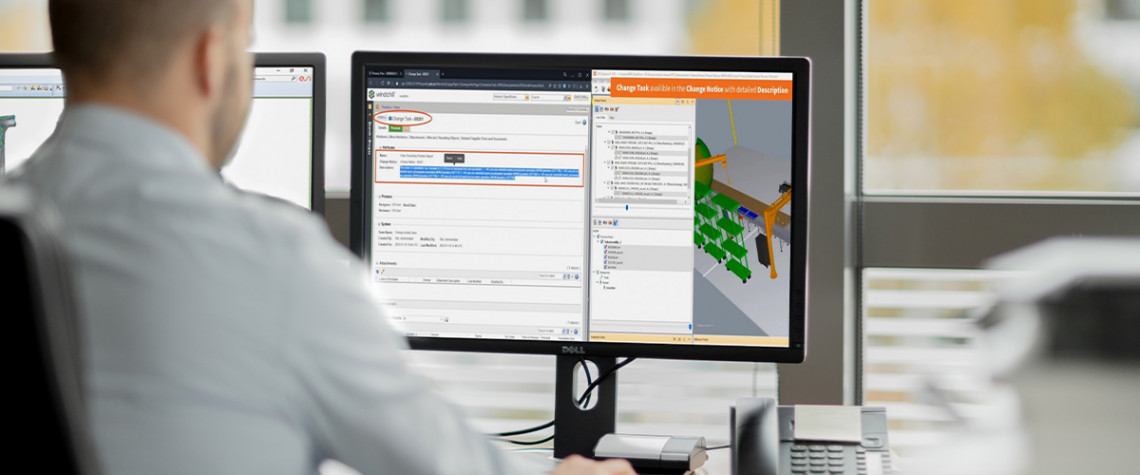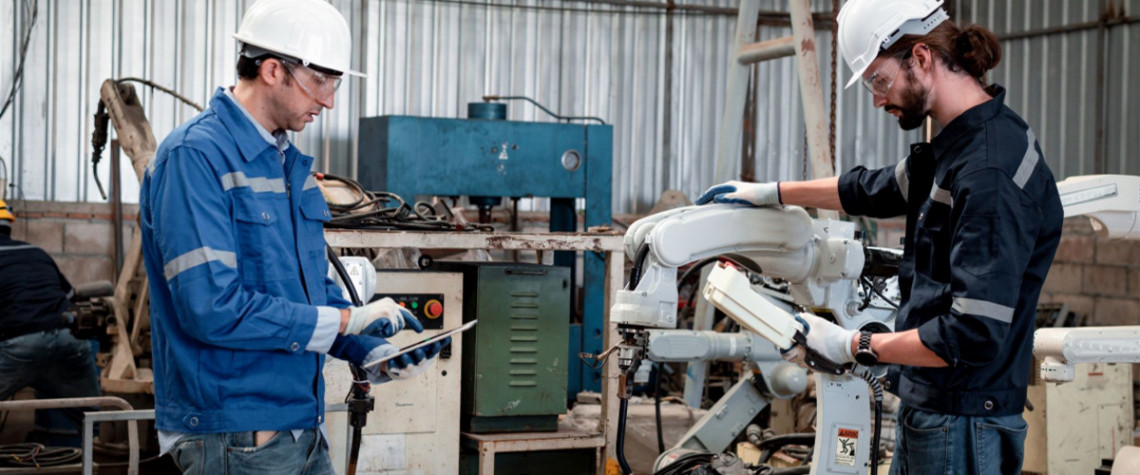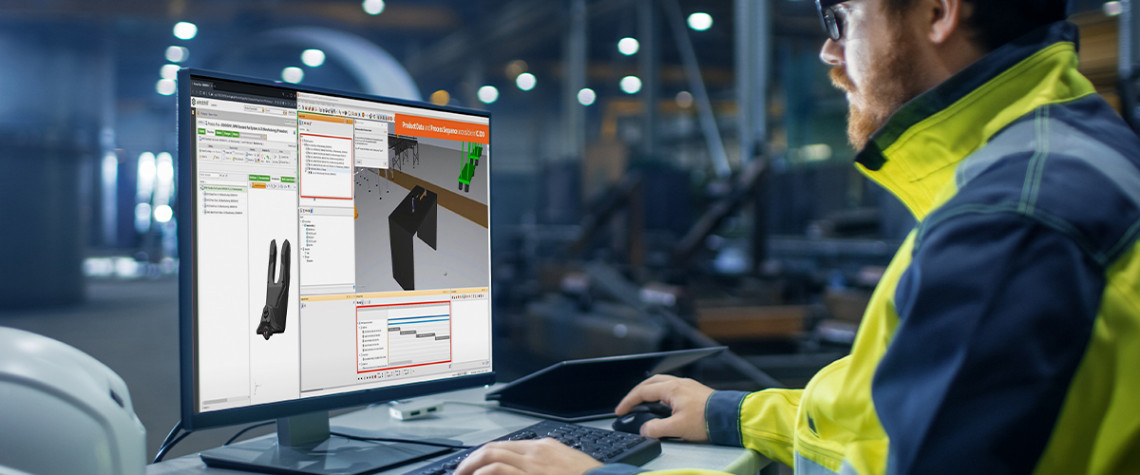How IC.IDO Weaves its way into Digital Threads with Windchill
Capturing process information in time to impact product design and process plan decisions

Virtual Reality (VR) and eXtended Reality (XR) create opportunities to experience and review our future products in the context of human-product-process interactions, or what one could call “Human-Centric Processes”, such as assembly or maintenance, as we discussed in previous in the previous article entitled 'Weaving Continuity into Enterprise Digital Threads'.
Virtual Reality, built on current CAD Data and process plans, engages users in true-to-life experiences like building a new car or maintaining an aircraft. Bringing digital designs, CAD data, and process plans together into a virtual build or virtual maintenance XR scene is the first step. Then, once an issue is discovered in a virtual build, we need to capture those observations, findings, and change requests from the virtual reality experience; merely making VR happen isn’t enough.
In this post, we will discuss the evolution of and current state of definition of virtual workspaces to conduct individual or collaborative reviews of human-centric processes.
Back in the day of in-person process reviews...

When assembly processes or maintenance procedures were reviewed in the past, enterprises had to ship prototypes or pre-production parts, tooling mock-ups or production intent tooling, and teams of people to a common site, or “pilot hall”, to conduct a physical build. During those piloting activities, people would pick up parts, attempt installation procedures then remove components, and make notes about what needed to be changed. Often, a product release engineer, process planner, or tool designer would keep a checklist of agreed-upon change requests from the individuals who had participated in the virtual build. Engineering program timing hinged on the ability to cascade to the appropriate design or engineering teams to process.
However, as digital reviews displaced physical reviews, this process becomes more opaque and less continuous. Today, engineering teams might be notified that data has been pulled from the PLM/PDM/MPM system and used in a digital simulation or other review, and an invite to an online review might arrive in their inbox instead of the plane tickets of yesteryear.
Back then, physical prototypes and mock-ups of production environments would be stood up. As discussed in the 'Weaving Continuity into Enterprise Digital Threads' blog, in fabricating the prototype or constructing mock-ups there were many opportunities for “accidental discovery” of design challenges that blocked the successful building of the pilot product.
If these were “no-build” situations, clearly the test or review could not happen until a new product design or process plan was realized; rejected components could be returned directly to designers who could access the physical build for further detail about the required changes to product or process.
More recently, CAD data is pulled, simulation or analysis happens, then hopefully the CAD record is appended in the PDM/MPM system with the records of what the pilot build discovered, and mitigation proposals captured. However, since people do not hand-build virtual prototypes or construct virtual assembly tools, accidental discovery of no-build situations resulting from human-product-process interactions risk not being discovered until people can walk up to the proposed production lines, pick up parts, and place them into their subassembly or remove them for replacement human-centric process validation.
Today, leading enterprises conduct virtual builds with virtual or eXtended reality tools, like ESI IC.IDO creates virtual environments to perform and experience physically realistic tasks with the products in virtuality. But, making a video game “level” that contains the product, proposed tooling, and gamifies the “correct assembly” of the product design isn’t quite the point. Gamification strategies risk decimating the reliability and accuracy of the review if product data cannot be directly carried into the virtual workspace.
Garbage-in/ Garbage-out (why the quality of your CAD data matters)

Assuring that full CAD detail is brought into virtual reality without degrading reliability is not trivial. Sometimes, to reduce latency and improve the performance of VR scenes, engineers might combine and simplify geometry or reduce the complexity of elements that one might assume might not impact the assembly or build process being reviewed. This introduces risks that the decimated, simplified, and combined geometries are effectively “greenwashing” issues without evidence.
After all, obtaining certainty around processes and product designs is the entire reason for conducting a human-centric process validation and immersive product integration review. Starting a review process by assuming some component attributes “won’t matter” leaves open the chance that later, when people FIRST pick up parts to build/maintain the proposed product, remaining risks can still be discovered.
VR builds that check-out data direct from the enterprise PDM/MPM System provide an efficient conduit into the virtual build or virtual maintenance review by assuring that the latest data is represented in the virtual world; this is a first step in weaving a more cohesive digital thread.
Along with bringing in geometry and enabling interactive processes needed to deliver a plausible virtual reality, one must not forget why we create the VR experience; validating procedures, and improving any processes or products with issues that are discovered in the engineering reviews held there. Building a solution that leaves this process off at “made VR happen”, leaves subscribers short of their desired outcome and destination. What good is hosting a fully digital review in virtual reality, if the lessons learned are not directly integrated into the digital thread.
Spreadsheets, documents, and even presentation slides have seen use as “engineering documents” appended to a PDM (product data management) or MPM (manufacturing process management) record. However, reliable transport of change requests with supporting pictures or sketches of an issue is another critical connection between process validation and impact on product or process designs.
Weaving Digital Continuity with Windchill
As we have deployed virtual reality installations across aerospace, automotive, ground transportation, heavy machinery, and other industries through the years, we faced challenges with avoiding data dead-ends together with our subscribers. Most recently, ESI Group and PTC have partnered to bring the validation of human-interactions in key processes closer together to the digital thread contained for enterprise subscribers, to their Windchill PDM and MPM solution.
ESI IC.IDO in Windchill represents our initial foray into connecting product data and human-centric process review findings. With it, enterprises can push product design data and process plans into VR reviews in the IC.IDO human-centric process validation environment, and collect annotations and mark-ups generated in the reviews.
Learn more about IC.IDO and Windchill in the latest IC.IDO release webinar.
Eric Kam is the Marketing and Alliances Director for ESI Group’s Manufacturing Business Channel, supporting their Immersive Experience (VR/AR/MR/xR) Solutions and Virtual Manufacturing Suite. He is an outspoken advocate for the ongoing transformation in Computer Aided Design, Finite Element Analysis, and Computer Aided Engineering. He has spent the bulk of the last 25 years promoting the democratization of previously “analyst-driven” technologies to bring the benefits of Virtual Engineering tools to the engineering and manufacturing practitioners themselves.